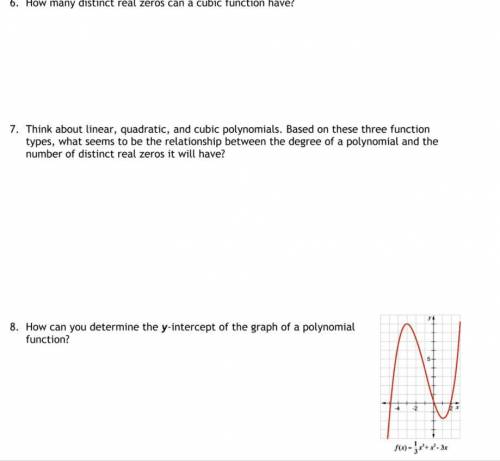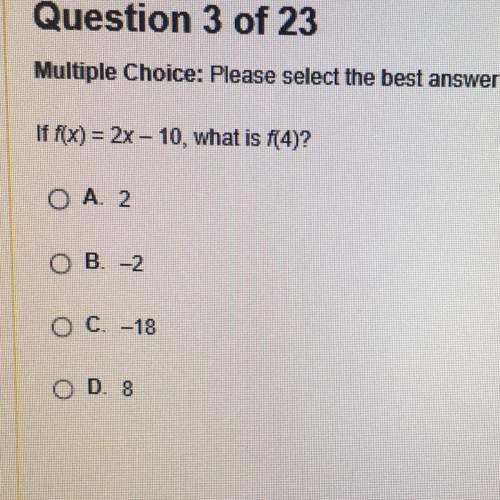
Mathematics, 22.01.2021 21:10 dondre54
1. Describe the end behavior of F(x)=x^3+x^2-3x. Why does the function have this end
behavior?
2. How would the end behavior be different for cubic functions in which the leading
coefficient is negative?
3. How would you describe the end behavior of a quadratic function?
4. Use the quadratic formula to find the roots of x2 – 4x + 6 = 0.
6. How many distinct real zeros can a cubic function have?
7. Think about linear, quadratic, and cubic polynomials. Based on these three function
types, what seems to be the relationship between the degree of a polynomial and the
number of distinct real zeros it will have?
8. How can you determine the y-intercept of the graph of a polynomial
function?
(Please do any of these i am desperate)




Answers: 2


Other questions on the subject: Mathematics

Mathematics, 21.06.2019 18:30, allenlog000
Can someone me out here and the tell me the greatest common factor
Answers: 1

Mathematics, 21.06.2019 19:00, kaylaamberd
What is the expression in factored form? -x^2 + 3x + 28 a. (x-7)(x-4) b. -(x-7)(x+4) c. (x+4)(x+7) d. -(x-4)(x+7)
Answers: 2

Mathematics, 21.06.2019 20:00, stichgotrich7159
Michael is training for a marathon. in his first week he plans to run 8miles. what path should he take
Answers: 1

Mathematics, 21.06.2019 20:40, alemvp8219
Reduce fractions expressing probability to lowest terms. in 3,000 repetitions of an experiment, a random event occurred in 500 cases. the expected probability of this event is?
Answers: 3
You know the right answer?
1. Describe the end behavior of F(x)=x^3+x^2-3x. Why does the function have this end
behavior?
Questions in other subjects:


Chemistry, 17.11.2020 21:40

Mathematics, 17.11.2020 21:40

History, 17.11.2020 21:40



Health, 17.11.2020 21:40

French, 17.11.2020 21:40


History, 17.11.2020 21:40




